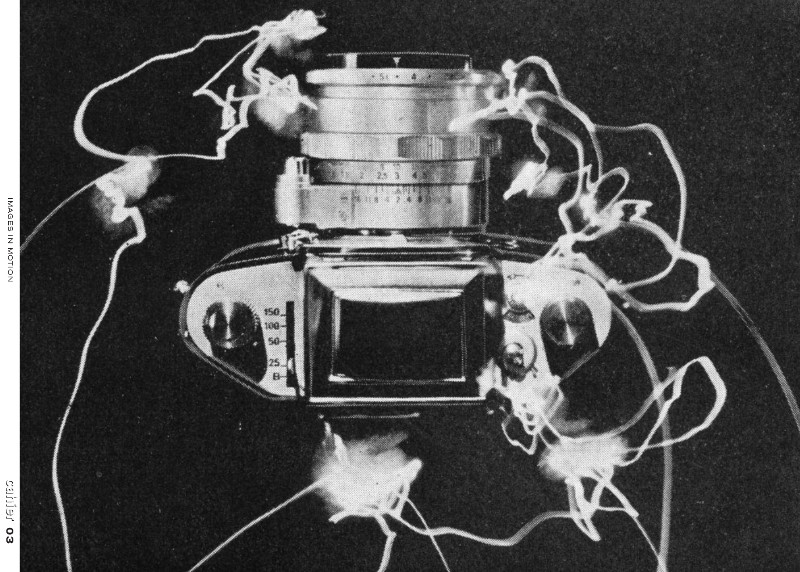Ingrid Hoelzl, Friedrich Tietjen (eds.): Images in Motion: Cahier #3 (2012)
Filed under cahier | Tags: · chronophotography, cinema, film, film history, film theory, history of photography, image, photography, time

The aim of this Cahier is to bring together contributions that, induced by digitalization but not confined to digital images, explore historical and contemporary image practices that are situated beyond the habitual definitions of photography and film. The first part of the essays traces the pre-digital history of photography as a time-image in early photography (Timm Starl), the implications of using photographic images for proto-cinematic optical toys (Friedrich Tietjen) and Auguste Chevallier’s translation of panoramic images into a circular image which upsets traditional notions of photographic temporality as much as notions of the frame (Katja Müller-Helle). The second part explores the historical legacy of the digital “moving still” such as the freeze effect (Eivind Røssaak) employed in the blockbuster film The Matrix (1999) or the ubiquitous Ken Burns effect (Ingrid Hoelzl) used as a display feature in Apple iPhoto and other photo-software. It is preluded by a visual essay by Maarten Vanvolsem and Jonathan Shaw. The essay assembles and discusses their respective artistic practice in relation to their chronophotographic predecessors such as Bragagila—in the unusual format of the photographic still.
Publisher Luca School of Arts, Brussels, December 2012
ISBN 9789490049072
78 pages
via Academia.edu
Eadweard Muybridge: The Stanford Years 1872–82 (1972)
Filed under catalogue | Tags: · chronophotography, cinema, film, film history, movement, photography

Catalogue for the exhibition held at Stanford University Museum of Art in 1972.
Edited by Anita Ventura Mozley
Publisher Department of Art, Stanford University, 1972
136 pages
via Archive.org
PDF (60 MB, no OCR)
Comment (0)Mary Ann Doane: The Emergence of Cinematic Time: Modernity, Contingency, the Archive (2002)
Filed under book | Tags: · afterimage, archive, chronophotography, cinema, contingency, entropy, film, film history, modernity, photography, time, vision

Hailed as the permanent record of fleeting moments, the cinema emerged at the turn of the nineteenth century as an unprecedented means of capturing time—and this at a moment when disciplines from physics to philosophy, and historical trends from industrialization to the expansion of capitalism, were transforming the very idea of time. In a work that itself captures and reconfigures the passing moments of art, history, and philosophy, Mary Ann Doane shows how the cinema, representing the singular instant of chance and ephemerality in the face of the increasing rationalization and standardization of the day, participated in the structuring of time and contingency in capitalist modernity.
At this book’s heart is the cinema’s essential paradox: temporal continuity conveyed through “stopped time,” the rapid succession of still frames or frozen images. Doane explores the role of this paradox, and of notions of the temporal indeterminacy and instability of an image, in shaping not just cinematic time but also modern ideas about continuity and discontinuity, archivability, contingency and determinism, and temporal irreversibility. A compelling meditation on the status of cinematic knowledge, her book is also an inquiry into the very heart and soul of modernity.
Publisher Harvard University Press, 2002
ISBN 0674007298, 9780674007291
288 pages
review (Meredith Morse, Senses of Cinema)
Comment (0)
